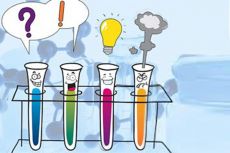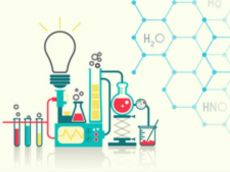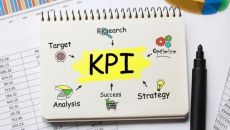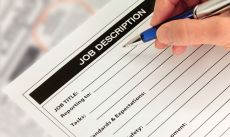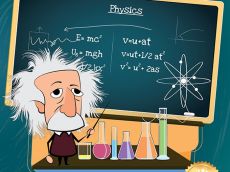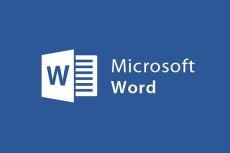Đề thi giữa HK2 môn Tiếng Anh 11 năm 2021
Trường THPT Trần Quang Khải
-
Mark the letter A, B, C, or D to indicate the word whose underlined part differs from the other three in pronunciation in each of the following questions
Câu 1:
Choose the word whose underlined part differs from the other three in pronunciation: dweller, overcrowded, network, waste.
A. dweller
B. overcrowded
C. network
D. waste
-
Câu 2:
Choose the word whose underlined part differs from the other three in pronunciation: commercial, electricity, advanced, processing.
A. commercial
B. electricity
C. advanced
D. processing
-
Câu 3:
Choose the word whose underlined part differs from the other three in pronunciation: inhabitant, geography, radiation, available.
A. inhabitant
B. geography
C. radiation
D. available
-
Câu 4:
Choose the word whose underlined part differs from the other three in pronunciation: upgrade, presentation, description, consumption.
A. upgrade
B. presentation
C. description
D. psychology
-
Câu 5:
Choose the word whose underlined part differs from the other three in pronunciation: disposal, optimistic, population, occupy.
A. disposal
B. optimistic
C. population
D. occupy
-
Mark the letter A, B, G, or D to indicate the correct answer to each of the following questions
Câu 6:
Local authorities should find ways to limit the use of private cars and encourage city ____ to use public transport.
A. commuters
B. planners
C. dwellers
D. people
-
Câu 7:
To get ready for the presentation, we can start preparing the slides while Jeremy will do the ____.
A. speaking
B. telling
C. talking
D. speech
-
Câu 8:
Located about 60 km southwest of Seoul, this eco city has been planned around a central park and designed so that every resident can walk to work in the business ____.
A. district
B. area
C. location
D. organisation
-
Câu 9:
The waste ____ system here is also innovative. There are no rubbish trucks or waste bins in the street.
A. dump
B. disposal
C. landfill
D. throwaway
-
Câu 10:
London is a/an ____ city. It's a melting pot for people from all parts of the world.
A. international
B. national
C. metropolitan
D. cosmopolitan
-
Mark the letter A, B, C, or D to indicate the correct answer to each of the following questions
Câu 11:
This is the right DVD, ____?
A. isn't this
B. is this
C. isn't it
D. is it
-
Câu 12:
I'm not the only one, ____?
A. aren't I
B. am I
C. am not I
D. are not I
-
Câu 13:
Let's go out tonight, ____?
A. shall we
B. will we
C. could we
D. would we
-
Câu 14:
Don't forget to write to me soon, ____?
A. would you
B. could you
C. can you
D. will you
-
Câu 15:
Nothing frightens you, ____?
A. does it
B. doesn't it
C. do they
D. don't they
-
Câu 16:
You are expected to fasten the seatbelt ____ you are driving.
A. when
B. if
C. whenever
D. all are correct
-
Câu 17:
If you need help, ____ me!
A. will tell
B. let's tell
C. let tell
D. tell
-
Câu 18:
If unemployment is rising, people ____ to stay in their current jobs.
A. tend
B. will tend
C. have tended
D. would tend
-
Câu 19:
If you see Karen, ____ you ask her to call me?
A. shall
B. will
C. do
D. would
-
Câu 20:
If you bully someone, you ____ them to do things against their will.
A. will force
B. forced
C. force
D. would force
-
Mark the letter A, B, C, or D to indicate the underlined part that needs correction in each of the following questions
Câu 21:
Choose the underlined part that needs correction: Won't (A) you be a lot (B) happier if (C) Dad came home (D) this weekend?
A. Won't
B. a lot
C. if
D. came home
-
Câu 22:
Choose the underlined part that needs correction: Should Jade gets (A) to interview (B) a famous politician, she will (C) ask lots of (D) difficult questions.
A. gets
B. to interview
C. will
D. lots of
-
Câu 23:
Choose the underlined part that needs correction: If (A) her condition should (B) improve (C), we inform (D) you immediately.
A. If
B. should
C. improve
D. inform
-
Mark the letter A, B, C, or D to indicate the correct response to each of the following exchanges
Câu 24:
“____?" – "It's ten minutes' walk from here.”
A. How long does it take to get to the town centre?
B. Can you show me the way to the town centre?
C. How far is it from here to the town centre?
D. How can we get to the town centre?
-
Câu 25:
“What a boring lecture!" - “____”
A. Yes, it was dull, wasn't it?
B. I don't agree. It's dull.
C. It's interesting, wasn't it?
D. I'm sorry not.
-
Read the following passage and mark the letter A, B, C, or D to indicate the correct answer to each of the questions
A NEW CAPITAL
When the new state of Pakistan was founded in 1947, Karachi acted as the capital city. However, it was difficult for Karachi to remain in this role due to a number of drawbacks such as the climate and the state of the existing buildings. Rather than try to overcome these drawbacks, the government decided to create a new capital city. In 1959, a commission was established to investigate the possible locations of this new city. The advisor appointed to the commission was Dr Doxiadis, a famous architect and city planner.
Dr Doxiadis and his colleagues looked at the various locations. They then produced a report suggesting two possible areas: one just outside Karachi and the other to the north of Rawalpindi. Both locations had advantages as well as disadvantages. Which site was it to be?
The choice between these two options was made after consideration of many factors, such as transportation, the availabilities of water, economic factors, and factors of national interest. Finally, the site north of Rawalpindi was chosen and on the 24th February 1960, the new capital was given the name of ‘Islamabad’ and a master plan was drawn up. This master plan divided the area into three different sections: Islamabad itself, neighbouring Rawalpindi, and the national park.
Each of these three sections had a different role. Islamabad would act as the national's capital and would serve its administrative and cultural needs, whereas Rawalpindi would remain the regional centre with industry and commerce. The third piece of the plan, the national park, was planned to provide space for education, recreation, and agriculture.
Today Islamabad is a thriving city of about 1 million people. It offers a healthy a pollution-free atmosphere, plenty of water, and many green spaces. Guide tree-lined streets, elegant public buildings, and well-organised bazaars and shopping centres. The new capital is a superb example of good urban planning.
Câu 26:
Why was a commission founded in 1959?
A. to overcome the drawbacks of Karachi as a capital city
B. to create a new capital city for Pakistan
C. to look into possibilities of the locations for a new capital city
D. to appoint an advisor for planning the new capital city
-
Câu 27:
How many places were suggested for the new capital city in the initial reports?
A. 1
B. 2
C. 3
D. 4
-
Câu 28:
Which of the following factors was NOT considered when choosing the location for the new capital city?
A. the climate and the state of the existing buildings
B. transportation and the availabilities of water
C. economic issues
D. issues of pational interest
-
Câu 29:
Which of the following is NOT true according to the passage?
A. Islamabad would serve cultural needs.
B. Rawalpindi would be the regional centre with industry and commerce.
C. The national park would provide space for agriculture.
D. Islamabad would play the most important role of all.
-
Câu 30:
What does the passage primarily describe?
A. The history of the two capital cities of Pakistan.
B. The disappearance of the old capital city of Pakistan
C. The reasons why Islamabad became the new capital city of Pakistan.
D. The choice and development of Islamabad as the modern capital of Pakistan.






